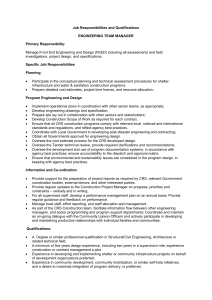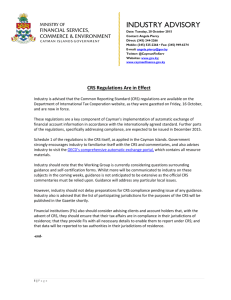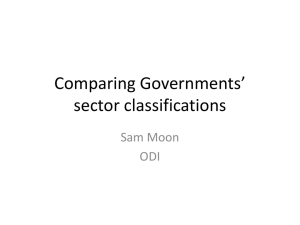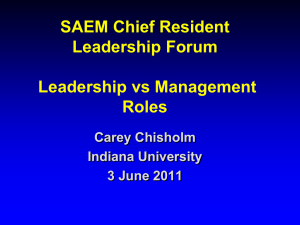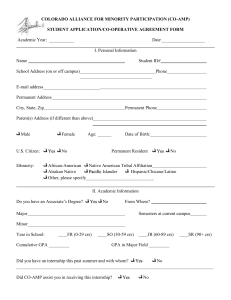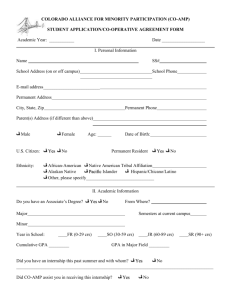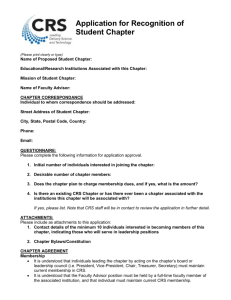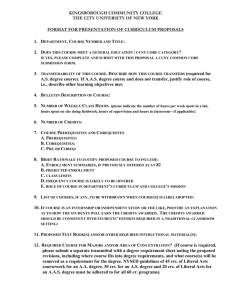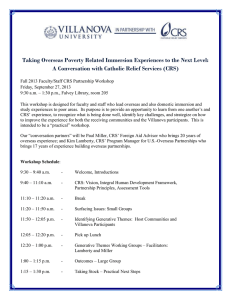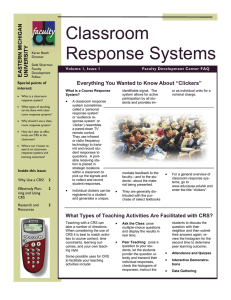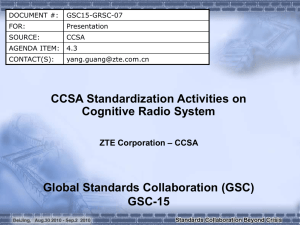ASSESSMENT The Basics of
advertisement
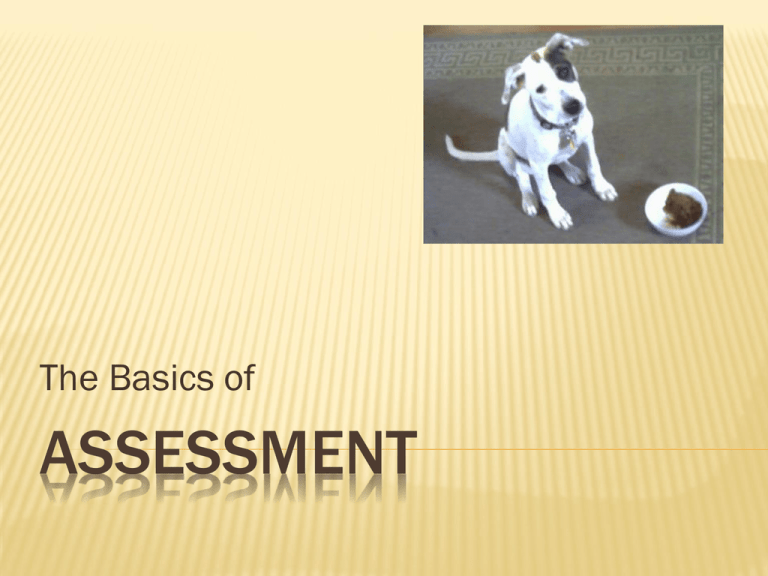
The Basics of ASSESSMENT WHY DO ASSESSMENT? The ACCJC requires it for accreditation To report it on program review To make course outlines more relevant (SLOs, assignments, reading, etc.) To refine assignments, tests, and explanations WHY DO ASSESSMENT? To improve student learning! WHAT IS ASSESSMENT? Assessment of student learning can be defined as the systematic collection of information about student learning, using the time, knowledge, enterprise, and resources available, in order to inform decisions about how to improve learning (Walvoord 2004). Assessment is a kind of "action research," intended to inform local action. WHAT IS ASSESSMENT? Educational situations contain too many variables to make "proof" possible. Therefore, assessment gathers indicators that will be useful for decision making. Assessment does not limit itself only to learning that can be objectively tested. Rather, a department can state its highest goals, including goals such as students' ethical development, understanding of diversity, and the like. Then it can seek the best available indicators about whether those goals are being met. Assessment means basing decisions about curriculum, pedagogy, staffing, advising, and student support upon the best possible data about student learning and the factors that affect it. A great deal of assessment is already occurring in responsible classrooms, departments, and institutions, though we have not always called it that. WHAT IS ASSESSMENT? Can be course or program level Three basic steps: Articulate your goals Gather evidence about how well students are meeting these goals Use the information for improvement WHAT IS ASSESSMENT? Basic principles of assessment (AAHE) The assessment of student learning begins with educational values. Assessment is not an end in itself but a vehicle for educational improvement. Assessment is most effective when it reflects an understanding of learning as multidimensional, integrated, and revealed in performance over time. Assessment works best when the programs it seeks to improve have clear, explicitly stated purposes. Assessment requires attention to outcomes but also and equally to the experiences that lead to those outcomes WHAT IS ASSESSMENT? Basic principles (continued) Assessment works best when it is ongoing not episodic. Assessment is a process whose power is cumulative. Assessment fosters wider improvement when representatives from across the educational community are involved. Assessment makes a difference when it begins with issues of use and illuminates questions that people really care about. WHAT IS ASSESSMENT? Basic principles (continued) Assessment is most likely to lead to improvement when it is part of a larger set of conditions that promote change. Assessment alone changes little. Its greatest contribution comes on campuses where the quality of teaching and learning is visibly valued and worked at. Through assessment, educators meet responsibilities to students and to the public. QUESTIONS BEFORE WE GO ON TO “HOW”? THE “HOW” PART It’s critical that assessment remain in the hands of faculty (for assessment of courses and academic programs) and student services staff (for assessment of student services) Not everything needs to be assessed at once Pick something and just get started Once you’ve gotten started, formulate a basic plan on how/ when other classes/ programs will be assessed COURSE LEVEL ASSESSMENT Communicate with/ meet with faculty in the discipline district-wide Select a course(s) to target Select an SLO(s) to target Design/ select a means to assess the SLO(s) Gather artifacts Design a rubric and practice norming Score/ evaluate artifacts Record and report Internal vs. external reporting of data Make adjustments based upon findings Continue the cycle RECORDING ASSESSMENT FOR EACH SECTION REPORTING COURSE LEVEL ASSESSMENT PROGRAM LEVEL ASSESSMENT Need to define programs GE outcomes Liberal Arts AA degree outcomes Certificates Occupational GE OUTCOMES - PHILOSOPHY GE PROGRAM OUTCOMES GE PROGRAM OUTCOMES (CONTINUED) GE PROGRAM OUTCOMES (CONTINUED) LIBERAL ARTS AA SLOS LIBERAL ARTS AA SLOS (CONTINUED) TRACKING SLOS BY COURSE FOR PROGRAM SLO1 CRS 1 SLO2 X CRS 2 X CRS 3 SLO3 SLO4 X X X X X CRS 4 X CRS 5 X SLO5 X X X X X X SLO1 CRS 1 SLO2 B CRS 2 B CRS 3 SLO3 SLO4 B B I B CRS 4 I CRS 5 I B I I I M SLO5 M I FOR HELP… Assessment coordinator Assessment committee being formed Curriculum Committee – SLO advice Assessment books Convocation workshop IN SUM Just start somewhere Collaborate with colleagues Make it your own Make it relevant/ useful Apply the results Remember that it’s a continuous cycle Many thanks to Susan Nordlof and the other members of the original A-Team for getting CR started with assessment and compiling much of the material used in this presentation.
